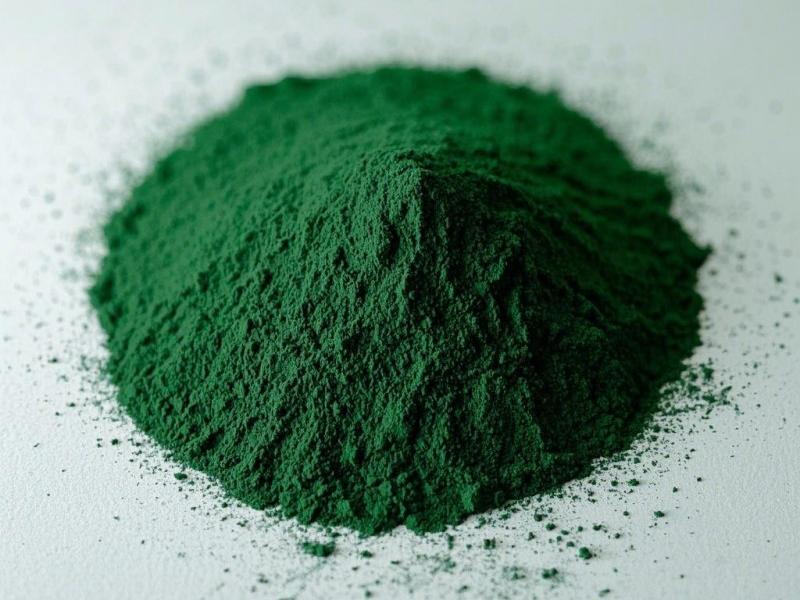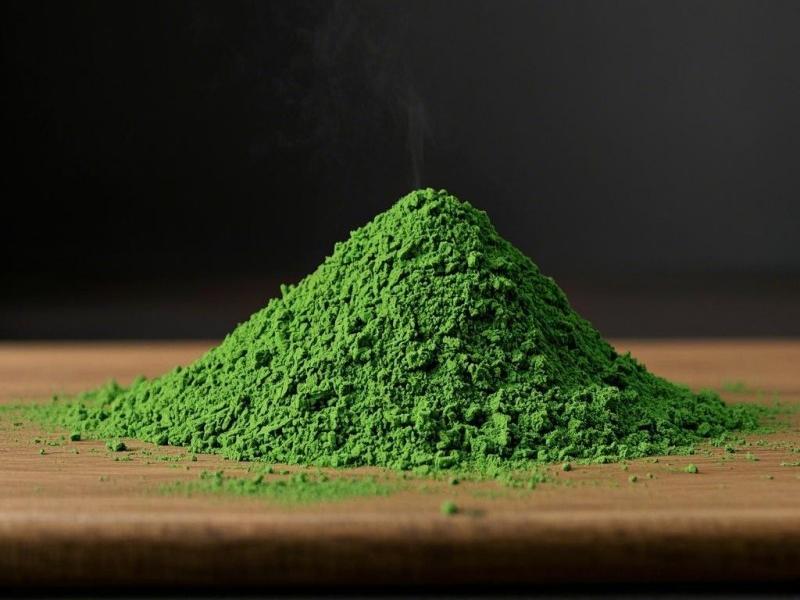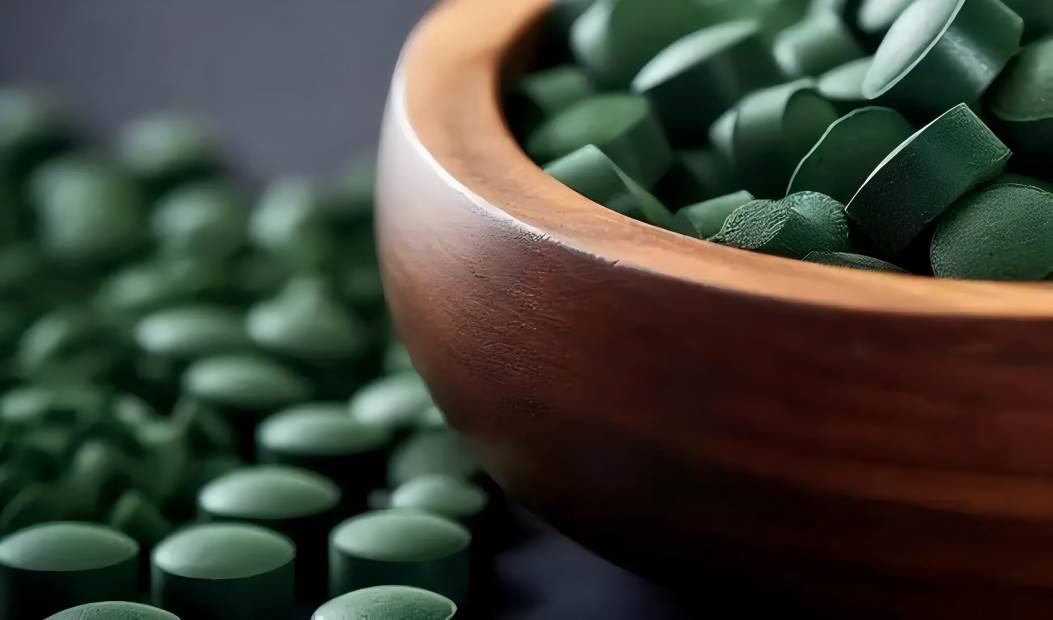What Is Spirulina Powder in Hindi?
Spirulina, a prokaryote, is a type of lower plant, also known as Spirulina platensis, of the phylum Cyanophyta, order Prochlorophyceae, family Spirochaetaceae, and genus Spirulina. It is one of the oldest organisms on earth and belongs to the cyanobacteria [1–3]. Its structure is a filamentous body composed of single or multiple cells [4], 200–500 μm long and 5–10 μm wide [4]. It is suitable for a wide range of habitats, including aquatic, terrestrial and extreme environments, such as Antarctic glacial lakes [5], strongly alkaline environments with a pH of 9.5–11, and high concentrations of sodium [6]. More than 35 species of spirulina have been discovered, most of which grow in alkaline salt lakes. It has now been cultivated artificially and produced on a large scale using mechanized methods. Currently, there are two main species of spirulina cultivated in China: one is the extremely large spirulina, which is native to Mexico, and the other is the blunt-headed spirulina, which is native to Lake Chad in Africa[7].
Spirulina powderin Hindi has a balanced nutrition, with high protein content and low fat and cholesterol content[8]. The World Health Organization and the United Nations Food and Agriculture Organization recommend spirulina as the best food and health product for humans in the 21st century[9-10]. The crude extract of spirulina can be used as a source for developing anti-cancer drugs [11]. Spirulina is gradually playing an important role in the field of human health food. It can not only supplement the body's protein and vitamins, but also has the effect of reducing cancer radiotherapy and chemotherapy, improving the body's immunity, and lowering blood lipids and blood pressure. Spirulina is now mostly found on the market in the form of tablets and health drinks. There have been no reports of toxic side effects of spirulina and its products on the human body.
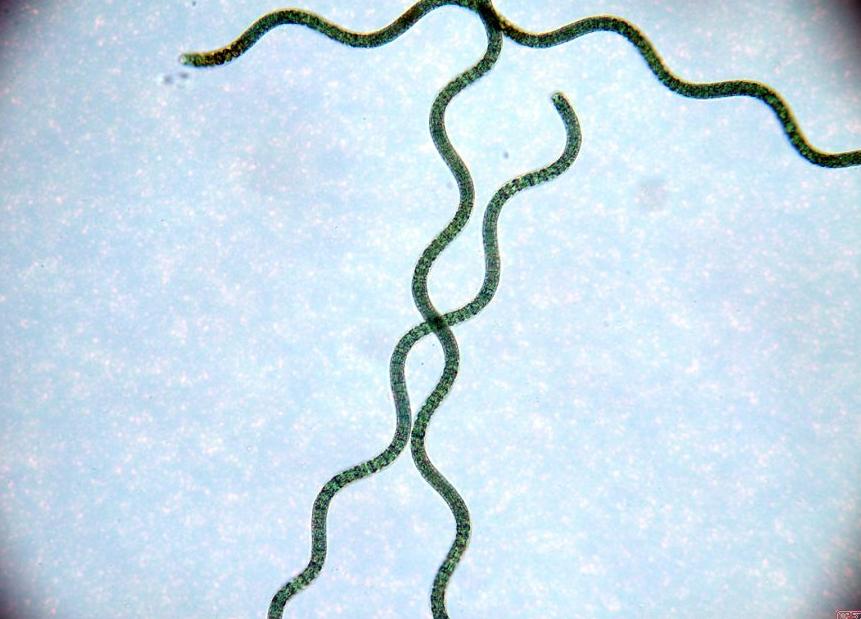
Spirulina has attracted worldwide attention due to its rich nutrients and good health care effects, and is especially highly regarded by scientific researchers. Some scholars have called spirulina the “nutritional champion of the earth” and “new star of medicine” [12]. This article describes the biological properties, functions and applications of spirulina, and also looks at the prospects for future research and development.
1 Biological properties of spirulina
Spirulina is a prokaryote that contains chlorophyll a and can carry out photosynthesis. It is often found in environments with plenty of light, high alkalinity and high mineral content. It has existed on earth for a long time. Some studies have confirmed that the appearance of spirulina can be traced back 3.5 billion years ago, making it a living fossil of the biological world.
Spirulina powder is rich in protein. Leonard and Compere measured the protein content of spirulina to be nearly 50% of the dry weight[13], while the spirulina cultivated by the Francais du Pdtrole Research Center contains 60% protein by dry weight[14]. Phycobiliproteins are the main proteins in spirulina, which are composed of three proteins: phycocyanin, phycocyanin and phycocyanin, with a content of between 10% and 20%. Phycocyanin is a biologically active protein that is widely found in spirulina cells. Its main function is to assist photosynthesis, but it also promotes protein absorption, has antioxidant, anti-tumor and anti-inflammatory properties, and is high in content. Phycocyanin not only efficiently transfers heat energy, but also acts as a natural coloring agent for products such as food, cosmetics and fuel [15].
2. Composition and functional properties of spirulina
2.1 Composition
Spirulina powder is rich in nutrients and contains many essential nutrients, including protein, vitamins, chlorophyll, lipids, β-carotene, γ-linolenic acid and polysaccharides (as shown in Table 1) [16-17]. It is also rich in trace elements such as calcium, iron, zinc, selenium, sodium, magnesium and potassium (as shown in Tables 1 and 2). and can be well absorbed by the human body. It is considered an ideal food and medicinal food resource [18]. Spirulina contains active substances that have therapeutic effects on many human diseases (as shown in Table 3). It can not only prevent anemia, but also improve the condition of patients with liver disease, stomach disease, heart disease, osteoporosis, etc., and has a certain effect on the treatment of AIDS and the suppression of cancer. Spirulina is currently the most nutrient-rich and comprehensive natural green food found in nature.

2.2 Functions
2.2.1 Antiviral and antitumor
Spirulina polysaccharides are an important bioactive ingredient with a complex and diverse structure, consisting mainly of D-mannose, D-glucose, D-galactose, L-rhamnose, D-arabinose and glucuronic acid [20]. Algal polysaccharides are found in the liver and muscle tissue of the human body, providing energy for the body's vital activities. Spirulina polysaccharides can not only participate in regulating cell activity, but also have various effects such as improving immunity, resisting radiation, anti-aging, and lowering blood sugar [21]. At present, there are many studies related to spirulina polysaccharides. Chen Hongshuo et al. [22] used mice as the research object, inoculated liver cancer cells in mice, and gavaged them with spirulina polysaccharides, and found that it had a very good inhibitory effect on tumors. Liu Qishun et al. [23] used high-sugar spirulina as a raw material to obtain high-sugar water-soluble spirulina polysaccharides. Anti-tumor tests found that high-sugar spirulina concentrations of 100–800 μg/mL had a significant inhibitory effect on human gastric cancer MKN cells in vitro, with an inhibition rate of up to 45%.
Phycocyanin is an important component of spirulina, non-toxic, soluble in water and has a certain stability, and has been used in many studies [24]. Fan Min [25] studied the effect of phycocyanin and its enzymatic products from Spirulina platensis on human cervical cancer Hela cells and found that both phycocyanin and its enzymatic products can inhibit the growth of these tumor cells. Other studies have shown that high concentrations of phycocyanin can induce apoptosis in lung adenocarcinoma cells [26]. Bobbili et al. [27] revealed that phycocyanin can scavenge free radicals and induce apoptosis in AK-5 tumor cells. It has been found that spirulina polysaccharides can inhibit the growth of S180 transplanted tumors in mice [28], delay the division cycle of tumor cells, and induce apoptosis [29].
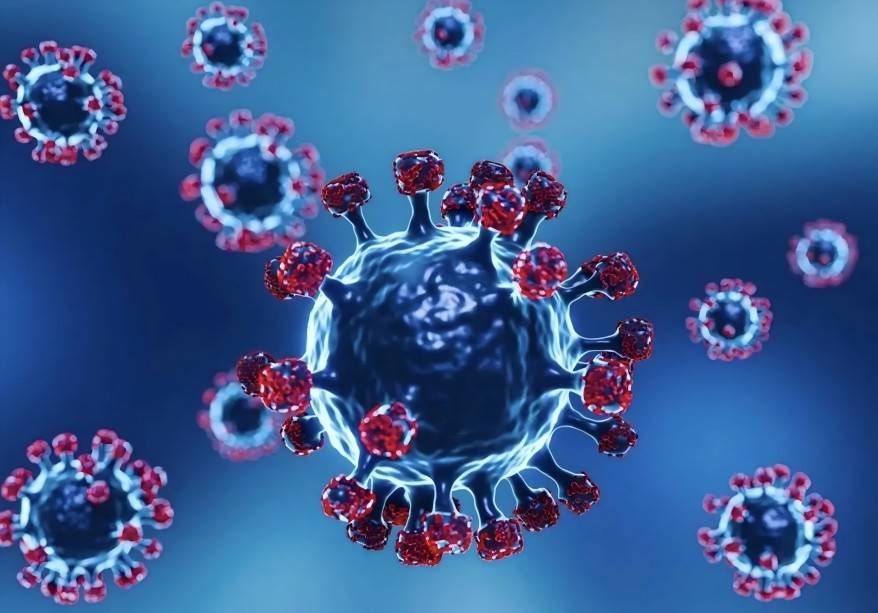
2.2.2 Regulation of immunity and anti-aging
The application of spirulina powder in regulating immunity and anti-aging is also a current hotspot of scientific research. Wing Pak et al. [31] studied the effect of spirulina on NASH rats and found that spirulina can reduce the inflammatory response by detecting related factors. Some studies have shown that supplementing spirulina during pregnancy can reduce the risk of fluoride poisoning in offspring [32]. Zhao Shurui et al. [33] studied the mechanism of spirulina in removing reactive organic nitrogen free radicals, hydroxyl radicals (·OH), nitric oxide (NO) free radicals, and superoxide anion (·O2-) radicals. The results showed that spirulina had a good scavenging effect on the above four free radicals, and the scavenging rate was positively correlated with the concentration of spirulina. Among them, the scavenging rate of spirulina for superoxide anions and organic nitrogen free radicals was the best at 40 mg/mL, reaching 90%.
2.2.3 Lowering blood lipids and blood sugar
Many studies have shown that spirulina may be an effective hypolipidemic and hypoglycemic agent. Chang Xueying et al. [34] studied the effects of spirulina polysaccharides on blood glucose and insulin levels in diabetic rats and concluded that spirulina polysaccharides can lower blood glucose, increase serum insulin levels and the β-cell function index, and speculated that the possible mechanism of action is to repair damaged islet cells and increase β-cell insulin secretion. Setyaningsih et al. [35] used biomass containing spirulina and phycocyanin to feed mice and measured its anti-hyperglycemic activity, proving that biomass containing spirulina and phycocyanin can reduce blood glucose levels in mice.
3 Spirulina applications and prospects
3.1 Spirulina food additives
3.1.1 Pigment or nutritional and health-enhancing fortification additives
Spirulina powder in Hindi is rich in beta-carotene, a natural vitamin nutrient with high nutritional value. It is widely found in nature and is the most stable natural pigment. It can be used as a coloring agent in foods such as beverages, candies, meat products, margarine, etc. The molecular structure of beta-carotene is equivalent to two molecules of vitamin A. After entering the body, 50% of it is converted into vitamin A through the action of enzymes in the liver and intestinal mucosa. It has a certain therapeutic effect on night blindness, helps to enhance the body's immunity, and also lowers blood pressure and strengthens the heart. It is a good food for patients with hypertension and coronary heart disease.
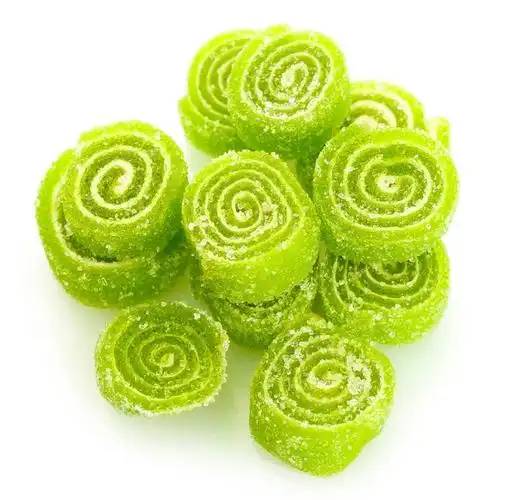
3.1.2 Dairy product additives
Jin Lei et al. [36] used milk and spirulina powder as raw materials to develop a sugar-free, high-protein stirred yogurt. This yogurt not only has a rich aroma, but also is rich in protein and a variety of active ingredients, and has high nutritional and health benefits. Wang Yan et al. [37] combined spirulina and yogurt to create a new yogurt with health benefits. Han Qing et al. [38] developed a new spirulina lactic acid bacteria fermented beverage with a unique flavor and complete nutrition by adding spirulina extract to fermented milk.
3.1.3 Colloidal food additives
Konjac is a beneficial alkaline food with both medicinal and edible properties. Lu Yuxia et al. [39] developed spirulina chocolate-flavored jelly by adding honey and chocolate and undergoing a Maillard reaction. The addition of honey and chocolate not only eliminated the fishy smell of spirulina, but also made the product more nutritious. Cui Yiejie [40] used konjac powder as the main ingredient, combined with spirulina, white sugar and citric acid, to develop a spirulina konjac jelly with high nutritional value and health benefits. It has a unique flavor and a comfortable texture. Dou Yong[41] used spirulina as the raw material to develop a spirulina health jelly with a beautiful crystal appearance, rich nutrition and a soft texture without adding any artificial coloring. Fang Wei[42] used black fungus, freeze-dried sea cucumber powder, spirulina powder and other ingredients to create a sugar-free black fungus jelly with sea cucumber and spirulina.
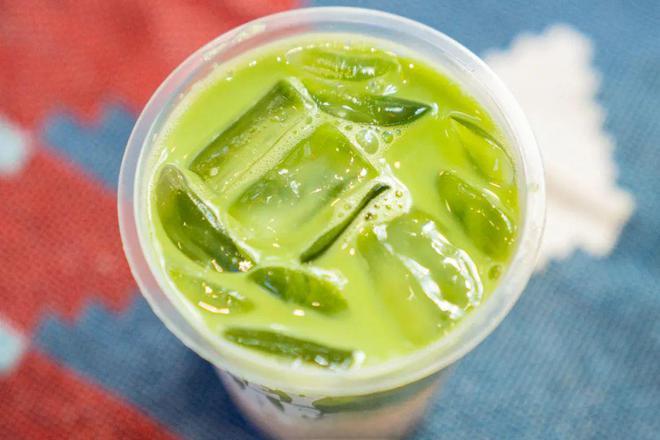
3.1.4 Beer additives
Hu Penggang et al. [43] explored and researched the production process of spirulina green beer, adding it to the filtered sake to develop a green beer with a spirulina flavor. The results showed that the optimal addition amount of spirulina liquid was 160 mg/L. Ren Yongxin et al. [44] pretreated spirulina powder to remove its fishy smell, made an extract and added it to the beer production to develop a high-quality beer with a pure taste and no odor.
3.2 Functional foods
Spirulina has the properties of anti-fatigue, anti-radiation and anti-virus. Spirulina can be used to inhibit the growth of tumors and enhance immunity, which opens up opportunities for its application in the field of functional foods [45-48]. The rich nutritional composition and various bioactive ingredients are the material basis for the health-care functions of spirulina. Health products made from spirulina as a raw material are effective for symptoms such as ulcers, anemia, diabetes, hepatitis, obesity and poor vision. The development of functional foods using spirulina has become a hot topic with huge market prospects.
Spirulina is nutritionally balanced, with low sugar, low fat and high protein content, and is therefore of great help to people with diabetes. Phycocyanin in spirulina has been reported to be a very important pigment [49] and can also enhance the body's immune system, assist in treatment and inhibit complications of diabetes. Desouki et al. [50] concluded that spirulina combined with EPO (erythropoietin) had a higher anti-hyperglycemic effect than the drugs used alone in the treatment of diabetic rats. EPO and spirulina have a protective effect on the function of pancreatic β-cells, possibly due to their strong antioxidant properties. Therefore, they have good prospects for the development of diabetic foods.
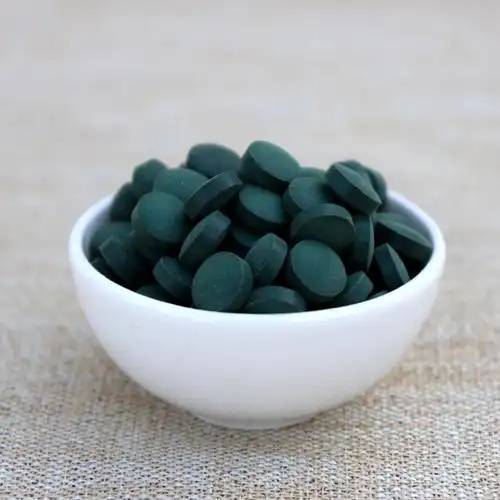
Yang Guorong and Hu Weixing used Camellia oleifera, Camellia oleifera fruit, Camellia oleifera oil, spirulina powder, walnut powder and fresh osmanthus as raw materials to make a spirulina blood-tonifying Camellia oleifera fruit mixed solid oil, which has the health functions of preventing cancer, boosting the immune system, tonifying the blood and nourishing the complexion [51]. Spirulina breakfast bread made with spirulina is soft and sweet, with a chewy texture. It also has the effect of reducing the toxic side effects of cancer radiotherapy and chemotherapy, improving immune function, and lowering blood lipids [52].
Zheng Yi et al. [53] used moringa leaves and spirulina as the main raw materials, and prepared moringa-spirulina nutritional tablets with more comprehensive and balanced nutrition through formula and process optimization. The tablet appearance, tablet weight difference, hardness, friability, disintegration time limit and other indicators all meet the corresponding quality requirements. This moringa-spirulina compound nutrient tablet has better results than spirulina tablets or moringa tablets alone. It can provide the body with balanced and comprehensive nutrition, improve the body's immunity, and promote good health.
3.3 Aquaculture
Spirulina plays a very important role in aquaculture. Spirulina is natural, highly nutritious and has a balanced nutritional profile, making it an excellent fish feed. It not only improves the survival rate of fish fry and their immune function, but also increases the income of farmers and promotes the development of aquaculture. Wu Ju [54] added spirulina powder to the feed for black carp to make spirulina extruded feed, and fed it to black carp fry weighing 150 g for 6 months. The result showed that the fry were healthy and the survival rate was extremely high, and none of them had liver lesions. This indicates that the feed has a certain liver protection function.
Lokapirnasarie et al. [55] used spirulina as a feed supplement for chickens to investigate the effects of this modified feed on myocardial necrosis and white blood cells in chickens infected with the avian influenza (H5N1) virus, significantly increasing the immunity of broilers. Saeid et al. [56] added spirulina containing trace elements to the basic feed and fed it to laying hens, significantly improving the strength of the eggshell by about 7.5% (p <0.05), and the number of cracked eggs was also lower, at about 14%.
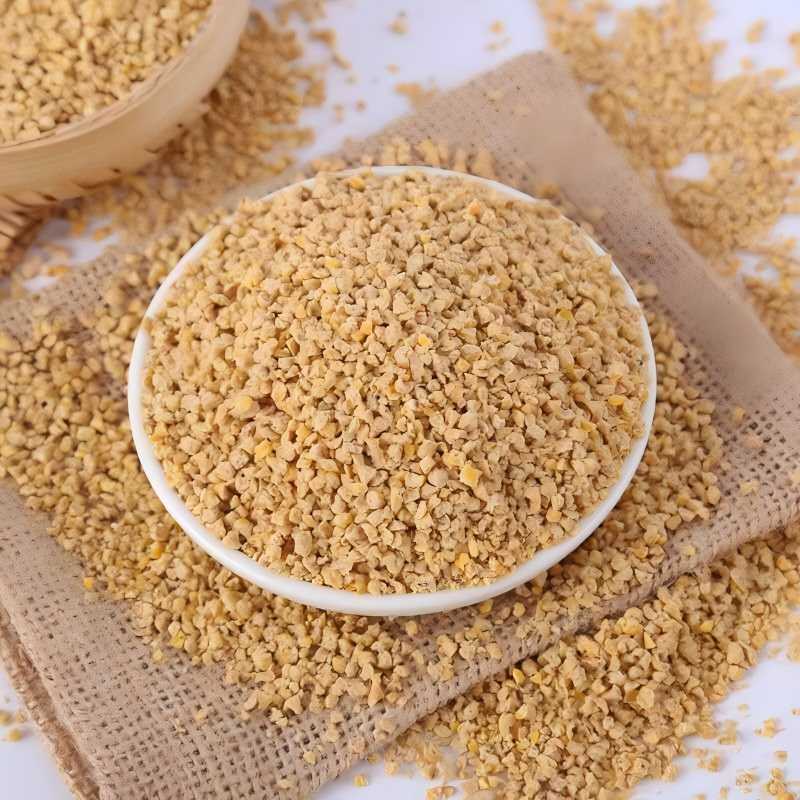
3.4 Cosmetics
The bioactive substances in spirulina have strong antioxidant properties, can remove free radicals in the human body, and can play an anti-aging, UV protection, and freckle removal role. Spirulina is rich in a variety of micronutrients and can provide the skin with essential amino acids, superoxide dismutase, and other active nutrients. There have been no reports of side effects of spirulina, so it is very safe for the human body, does not irritate the skin, and does not cause allergic reactions. It is a good cosmetic product.
Spirulina can reduce the intestinal absorption of lipophilic analogues, control caloric intake, prevent fat storage, and consume fat through thermogenesis, accelerate the metabolic rate of fat, convert fat into sugar and protein, and protect the nutrients the body needs to achieve the goal of weight loss[57]. Sun Manze[58-59] made spirulina weight loss tablets with spirulina extract, Chinese herbal extract, filler, flavoring agent, binder, made from spirulina extract, Chinese herbal extract, filler, flavouring agent, binder and auxiliary agent, has a certain weight loss effect; spirulina beauty and fat loss meal tablets made from spirulina extract, multigrain powder, vegetable powder, concentrated fruit juice, konjac syrup, maltose, glycerin and binder have the effect of beautifying the skin, lowering blood fat and weight, and shaping the body and strengthening the body.
3.5 Environmental protection
The application of spirulina in the field of environmental protection, especially in sewage treatment, has very broad prospects. Spirulina cultivated in a specific environment has a certain ability to purify sewage, and has the advantages of low input, high output and high efficiency.
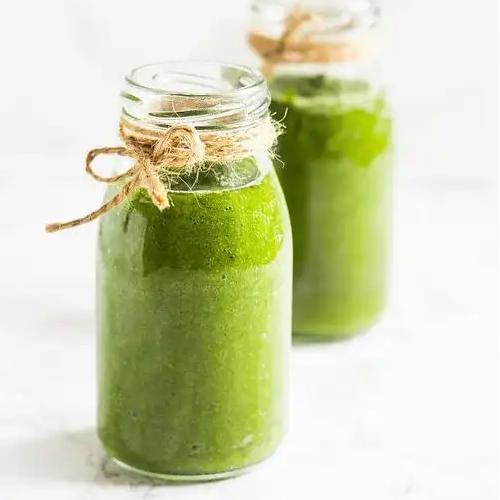
4 Conclusion
As mankind's “superfood” of the 21st century, spirulina is widely used worldwide as a natural food supplement. It has a history of being safe and non-toxic when consumed over the long term, and was part of the daily diet of indigenous peoples in Africa and the Americas. Spirulina is rich in many kinds of micronutrients that are very useful for the human body, and its prospects are very bright. Spirulina is rich in nutrients and safe. It is a low-fat, low-calorie, cholesterol-free protein source that can improve the body's immune system, resist viruses, and fight oxidation. It can also help treat diseases and is effective for human health. It is therefore of great value in human health food and beauty products. However, due to the complex extraction process, spirulina is expensive and the extraction yield is generally low, which limits the further development of spirulina products and prevents them from fully meeting consumer demand. Further improving the extraction method, reducing production costs, increasing the extraction rate of spirulina active substances, and perfecting clinical trials are the focus and direction of future spirulina research. With the development of genetic engineering technology becoming more and more mature, the use of genetic engineering technology to carry out related modification and breeding and mutation research on spirulina to create greater benefits for mankind is worthy of our in-depth study.
At present, both at home and abroad, research is being carried out on the mechanism of action of spirulina and its application in other fields. Spirulina has the characteristic of strong antioxidant capacity, which not only plays a role in the health food industry, but can also be used to preserve fruits, vegetables and aquatic products. It is worth noting that although spirulina and its products are gradually becoming more popular, it is also important to fully understand the potential risks of using it as a nutritional supplement. Relevant research institutions and scholars should conduct risk assessments to determine whether it is allergenic, whether it has an antagonistic effect on the human body when combined with certain substances, etc. Taking into account its safety, nutritional properties and functional characteristics, spirulina and its active substances have a bright future in the research and development of functional foods and preservatives. It is expected to become a new star in the health food and preservative industries, and better serve human health.
References:
[1] Wang Zhiping, Qian Kaixian. Research progress in genetic breeding of spirulina [J]. Microbiology Bulletin, 2000, 27(4): 288.
[2] Ma Guiwu, Qiu Chunyi. The development status and prospects of spirulina in China [J]. Journal of Zhanjiang Ocean University, 1997, 17(1): 78, 80.
[3] Hu Hongjun. The current situation and development trend of spirulina biotechnology abroad [J]. Wuhan Botanical Research, 1997, 15(4): 369-374.
[4] AINAS M, HASNAOUI S, BOUARAB R, et al. Hydrogen production with the cyanobacterium Spirulina platensis[J]. International Journal of Hydrogen Energy, 2017: 1-6.
[5] TAMAGNINI P, AXELSSON R, LINDBERG P, et al. Hydrogenases and hydrogen metabolism of cyanobacteria[J]. Microbiol Mol Biol Rev, 2002(66): 1e20.
[6] ANANYEV G, CARRIERI D, DISMUKES GC. Optimization ofmetabolic capacity and flux through environmental cues to maximize hydrogen production by the cyanobacterium arthrospira (Spirulina) maxima[J]. Appl Environ Microbiol, 2008(74): 6102e13.
[7] Cao Songyi, Guo Wei, Zhang Shaobin, et al. Research progress on the factors affecting the content of spirulina polysaccharides [J]. Hebei Agricultural Science, 2015, 14(5): 59-60.
[8] ZHENG Y, ZHU F, LIN D, et al. Optimization of formulation and processing of Moringa oleifera and spirulina complex tablets[J]. Saudi Journal of Biological Sciences, 2016, 24(1): 122-126.
[9] Xu Haibin, Chen Yan, Li Fang, et al. Investigation of microcystin contamination in raw materials and products of spirulina health food [J]. Health Research, 2003, 32(4): 339-343.
[10] HUIJUAN X, GUIHUA X. Review health effect ofspirulina as function food[J]. Agric Sci, 2005(26): 90-93.
[11] HERNANDEZ F Y F, KHANDUAL S. Cytotoxic effect of Spirulina platensis extracts on human acute leukemia Kasumi-1 and chronic myelogenous leukemia K-562 cell lines[J]. Asian Pacific Journal of Tropical Biomedicine, 2017, 7(1): 14-19.
[12] Wang Wenbo, Gao Junlian, Sun Jianguang. Nutritional and health-promoting value of spirulina and its application in preventive medicine [J]. China Food and Nutrition, 2009(1): 49-51.
[13] CIFERRI O. Spirulina, the edible microorganism[J]. Microbiological Research, 1983, 47(4): 551-578.
[14] CLEMENT G, GIDDEY C, MENZI R, et al. Amino acid composition and nutritive value ofthe alga Spirulina maxima[J]. Journal of the Science of Food and Agriculture, 1967, 18(11): 497-501.
[15] Li Xiaoqing, Wu Binbin, Zhang Yanling. Research progress on the function of spirulina and its fermentation broth [J]. Food Research and Development, 2014, 35(23): 145-148.
[16] Xiang Hongyan. Research progress on the antitumor effects of spirulina polysaccharides and their derivatives [J]. Feed Expo, 2011(4): 45-48.
[17] WAN D, WU Q, KUCA K. Chapter 42-Spirulina[J]. Nutraceuticals, 2016: 569-583.
[18] CELEKLI A, YAVUZATMACA M. Predictive modeling of biomass production by Spirulina platensis as function of nitrate and NaCl concentrations[J]. Bioresource Technology, 2009, 100(5): 1847-1851.
[19] Wang Hongxin. New Resources of Food [M]. Beijing: China Light Industry Press, 2002: 110-112.
[20] Li Jiantao, Zhang Qian, Zhang Jianmin. Research progress on the function and application of spirulina polysaccharides [J]. Heilongjiang Agricultural Science, 2013(11): 144-146.
[21] Li Yang, Lai Yan. Research progress on the antitumor effect of spirulina polysaccharides [J]. Clinical Research, 2011, 26(2): 170-172.
[22] Chen Hongshuo, Li Xiaoying, Feng Pengmian, et al. Research on the antitumor effect of spirulina polysaccharides against H22 tumors [J]. Food Research and Development, 2014(5): 120-123.
[23] Liu Qishun, Yin Heng, Sun Yongxin, et al. A spirulina polysaccharide and its application: China, 201410729758.9[P]. 2016-06-29.
[24] GAD AS, KHADRAWY YA, EL-NEKEETY AA, et al. Antioxidant activity and hepatoprotective effects of whey protein and Spirulina in rats[J]. Nutrition, 2011, 27(5): 582-589.
[25] Fan Min. Anti-tumor activity of the phycocyanin of the dinoflagellate Alexandrium tamarense and its enzymatically hydrolyzed products [D]. Hohhot: Inner Mongolia Agricultural University, 2008.
[26] Zhang Shenfeng. Isolation and purification of C-phycocyanin and its subunits and in vitro anti-tumor research [D]. Hangzhou: Zhejiang University, 2005.
[27] BV PARDHASARADHI, AM ALI, AL KUMARI, et al. Phycocyanin-mediated apoptosis in AK-5 tumor cells involves down-regulation of Bcl-2 and generation of ROS [J]. Mol Cancer Therapeutics, 2003, 2(11): 1165-1170.
[28] Du L. Antibacterial and antitumor activities of polysaccharides from two ecotypes of Spirulina platensis and their mechanisms [D]. Hohhot: Inner Mongolia Agricultural University, 2010.
[29] Zhang J, Zou N, Sun D. Research progress on antitumor components of spirulina [J]. Food Research and Development, 2016, 37(14): 214-216.
[30] Xie Shaolin, Chen Pingyuan, Lv Zijun. Effect of spirulina supplementation in feed on the growth and muscle nutritional quality of Pengze crucian carp [J]. Aquaculture, 2015, 36(10): 26-29.
[31] PAK W, TAKAYAMA F, MINE M, et al. Anti-oxidative and anti-inflammatory effects of spirulina on rat model of non-alcoholic steatohepatitis[J]. Journal of Clinical Biochemistry & Nutrition, 2012, 51(3): 227-234.
[32] BANJI D, BANJI OJ F, PRATUSHA N G, et al. Investigationon the role ofSpirulina platensis, in ameliorating behavioural changes, thyroid dysfunction and oxidative stress in offspring of pregnant rats exposed to fluoride[J]. Food Chemistry, 2013, 140(1-2): 321-331.
[33] Zhao Shurui, Zheng Meiqing, Wu Yingting, et al. ESR study on the in vitro scavenging of free radicals by spirulina [J]. Food Research and Development, 2015, 36(18): 91-94.
[34] CHANG Xueying, WANG Suyi, ZHANG Runan, et al. Effect of Spirulina polysaccharide on blood glucose and insulin levels in diabetic rats [J]. Occupational and Health, 2016, 32(17): 2348-2350, 2355.
[35] SETYANINGSIH I, BINTANG M, MADINA N, et al. Potentially antihyperglycemic from biomass and phycocyanin of Spirulina fusiformis voronikhin by in vivo test [J]. Procedia Chemistry, 2015: 211-215.
[36] Jin Lei, Wang Hong. Development of stirred sugar-free spirulina yogurt [J]. Food Industry, 2006, 27(1): 26-27.
[37] Wang Yan. Development of a new type of spirulina yogurt [J]. Agricultural Science and Technology and Equipment, 2011(9): 21-23.
[38] Han Qing, Zhou Hongchun. Development of spirulina lactic acid bacteria fermented beverage [J]. Experimental Report and Theoretical Research, 2008(2): 27-30.
[39] Lu Yuxia, Zhong Guangquan, Ye Qiongxing, et al. Development of spirulina chocolate jelly [J]. Process Technology, 2006(27): 137-139.
[40] Cui Y. Development of spirulina konjac jelly [J]. China Food and Nutrition, 2009(10): 46-48.
[41] Dou Y. Development of spirulina health jelly [J]. Food Industry, 2011, 32(1): 19-21.
[42] Fang Wei. A sea cucumber, spirulina, sugar-free black fungus jelly and a preparation method thereof: China, 201510533766.0[P]. 2015-12-16.
[43] Hu Penggang, Liu Qiang. Development of spirulina green beer [J]. Brewing Science and Technology, 2004(5): 113-114.
[44] Ren Yongxin, Cui Jinmei. Health food spirulina and beer brewing [J]. Brewing Science and Technology, 2004(5): 89-90.
[45] BELAY A, OTA Y, MIYAKAWA K, et al. Current knowledge on potential health benefits of Spirulina[J]. J Phycol, 1993, 5(2): 235-241.
[46] BHAT VB, MADYASTHA KM. Scavenging of peroxynitrite by phycocyanin and phycocyanobilin from Spirulina platensis: Protection against oxidativedamage to DNA[J]. Biochem Biophys Res Commun, 2001, 285(2): 262-266.
[47] CAPELLI B, CYSEWSKI G R. Potential health benefits of Spirulina microalgae*[J]. Nutrafoods, 2010, 9(2): 19-26.
[48] CHEN Y C, The effect of shifts in medium types on the growth and morphology of Spiruuna platensis (Arthrospira platensis)[J].J Mar Sci Technol, 2011, 19(5): 565-570.
[49] FAROOQ SM, BOPPANA NB, DEVARAJAN A, et al. C-phycocyanin confers protection against oxalatemediate- doxidative stress and mitochondrial dysfunctions in MDCK cells[J]. PLoS One, 2014, 9(4): e93056.
[50] EL-DESOUKI N I, TABL G A, ABDEL-AZIZ K K, et al. Improvement in beta-islets of Langerhans in alloxaninduced diabetic rats by erythropoietin and spirulina[J]. Journal of Basic & Applied Zoology, 2015(71): 20-31.
[51] Yang Guorong, Hu Weixing. A spirulina blood-enriching oil-tea fruit mixed solid oil and its preparation method: China, 201510584149.3[P]. 2015-12-23.
[52] Zhu, D. A spirulina breakfast bread. China, 201510659975.X[P]. 2016-02-24.
[53] Zheng, Y., Zhu, F., Lin, D., et al. Formulation and production process optimization of a moringa-spirulina compound nutrient tablet. Food Industry, 2016(06): 166-169.
[54] Wu J. A spirulina extruded feed for black carp: China, 201510554019.5 [P]. 2015-12-09.
[55] LOKAPIRNASARI W P, YULIANTO A B, LEGOWO D, et al. The effect of Spirulina as feed additive to myocardial necrosis and leukocyte of chicken with Avian Influenza (H5N1) virus infection[J]. Procedia Chemistry, 2016: 213-217.
[56] SAEID A, CHOJNACKA K, OPALINSKI S, et al. Biomass ofSpirulina maxima enriched by biosorption process as a new feed supplement for laying hens[J]. Algal Research-Biomass Biofuels and Bioproducts, 2016: 342-347.
[57] EL-TANTAWY W H. Antioxidant effects of Spirulina supplement against lead acetate-induced hepatic injury in rats[J]. Journal of Traditional & Complementary Medicine, 2015, 5(4): 327.
[58] Sun Manze. A spirulina weight loss and slimming tablet and a preparation method thereof: China, 201510498686.6[P]. 2015-11-25.
[59] Sun Manze. A spirulina beauty and fat loss meal tablet and a preparation method thereof: China, 201510619297.4[P]. 2015-11-25.


 English
English French
French Spanish
Spanish Russian
Russian Korean
Korean Japanese
Japanese